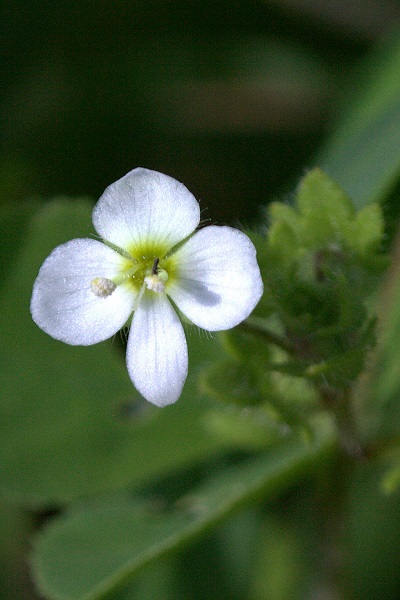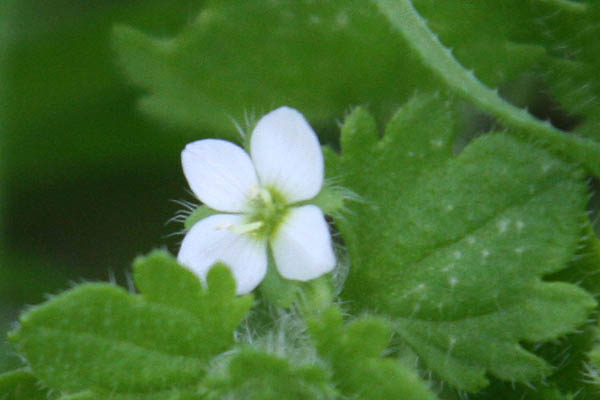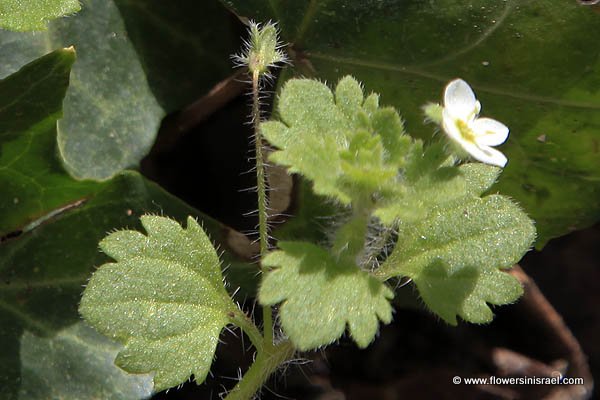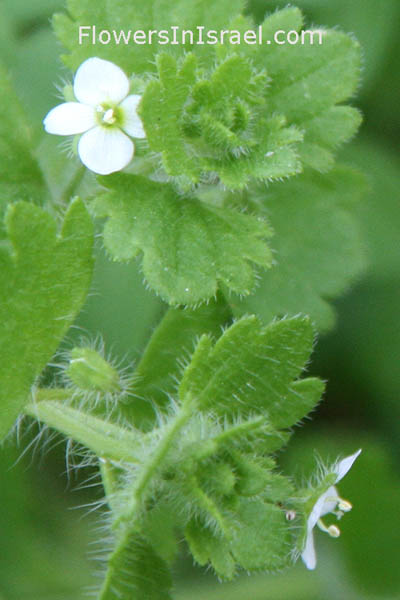Hebrew: ורוניקה לבנה, Arabic: زهرة الحواشي المفلوعة
| Scientific name: | Veronica cymbalaria Bodard | |
| Common name: | Cymbalaria speedwell, Pale Speedwell | |
| Hebrew name: | ורוניקה לבנה | |
| Arabic name: | زهرة الحواشي المفلوعة | |
| Español: | Verónica | |
| Plant Family: | Scrophulariaceae, Figwort Family, לועניתיים |

|
| Life form: | Annual | |
| Stems: | 8-15 cm; stem hairy, very branched | |
| Leaves: | Simple | |
| Flowers: | Flower solitary on axillary peduncles longer than the leaf; corolla 6-10 mm; with 4 White petals, fused in tube at the base; calyx 3-4 mm, partly fused, very hairy, blunt, ciliate sepals; | |
| Fruits / pods: | Capsule ciliate, fruiting pedicel very long, 2-4 seeded | |
| Flowering Period: | January, February, March, April | |
| Habitat: | Mediterranean maquis and forest, Batha, Phrygana, Disturbed habitats | |
| Distribution: | The Mediterranean Woodlands and Shrublands, Semi-steppe shrublands | |
| Chorotype: | Mediterranean | |
| Summer shedding: | Ephemeral |

Derivation of the botanical name: Veronica, named for the woman who took her veil, or a linen cloth, and wiped the sweat from the face of Jesus as he was bearing his cross to Calvary, and so named because the markings on some species supposedly resemble those on her sacred handkerchief. cymbalaria; cymbalum, κυμβαλον, cymbal; cymbal like, referring to the rounded leaf shapes. The Hebrew name: ורוניקה, Veronica , transliteration from the scientific name.


|